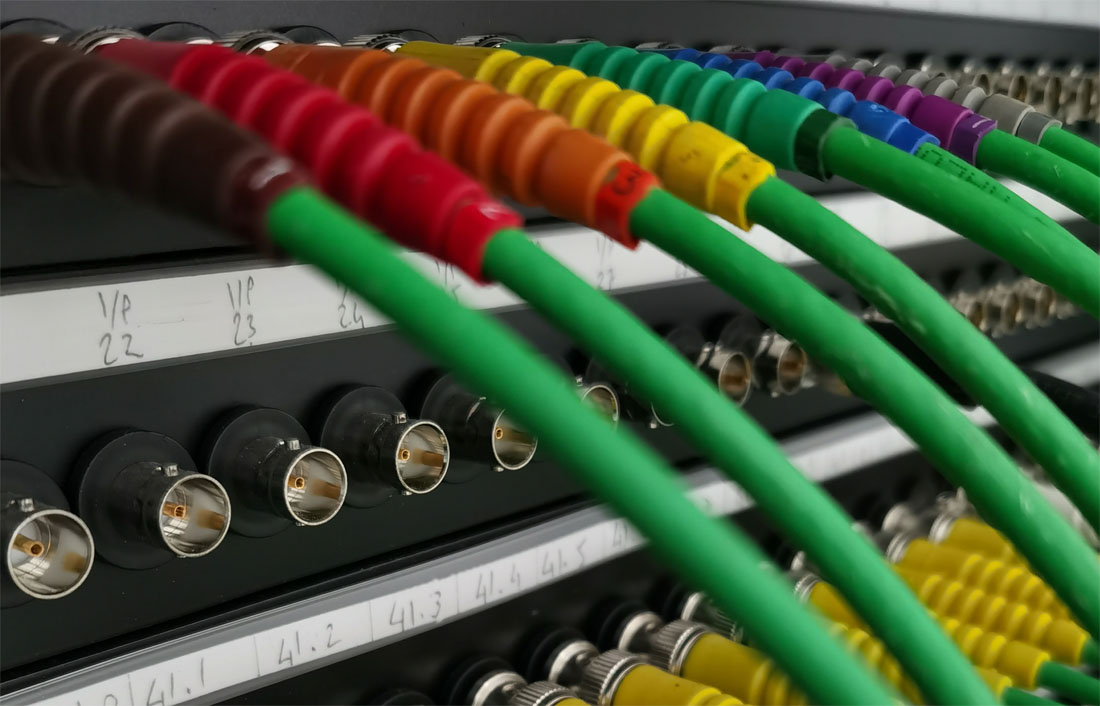Column: The status of SDI to IP transitions and the benefits of maintaining hybrid environments… for now

Subscribe to NCS for the latest news, project case studies and product announcements in broadcast technology, creative design and engineering delivered to your inbox.
Hybrid work quickly became a topic on everyone’s mind over the past year. But it’s been a focus of the broadcast industry for much longer, especially when it comes to finding the right balance between moving fully to IP while still maintaining SDI infrastructures.
There’s no denying the future of broadcast is based on transitioning to all-IP. That migration holds the potential for delivering significant long-term benefits, especially providing a cost-effective roadmap. IP allows broadcasters to scale and adapt easily, quickly spin up new services to meet changing audience demands for content and flexibly configure and manage devices and workflows.
But this is not new information; the benefits of IP have been proven and widely circulated for years. What is new for discussion is the status of the IP migration, and the factors impacting it – both from within the industry and outside.
Broadcasters will benefit from IP’s increased flexibility and A/V source control. However, many broadcasters aren’t prepared to switch from SDI to IP all at once.
One recent factor is the pandemic, which has put a hold on, or at least delayed, the digital transformation plans of organizations in nearly every industry. The reasons are mostly obvious: when business slows down, budgets are affected and costs need to be diverted elsewhere.
But the pandemic has also accelerated a trend that was already rapidly gaining traction: remote production, which benefits greatly from IP delivery and is now fully formed as a cost effective and viable method for complementing traditional on-site production.
While many larger infrastructure projects have been delayed over the past year, especially in terms of uncompressed IP projects, there’s no doubt the pandemic has broken down some of the barriers for IP to play a key role in enabling remote workflows when it comes to compressed IP and public cloud deployments. This has driven the growth of remote production and a willingness to experiment with new types of workflows, especially of the hybrid variety.
Benefits of a hybrid IP/SDI infrastructure
There are many reasons for maintaining a hybrid IP/SDI environment. It leaves all your options wide open for the future. Maybe your growth plans are still being evaluated, but you know you’ll need to expand at some point, increase channels, broaden system or network size, add new services, upgrade to new resolutions, and on and on.
IP fully and easily supports all that and more, while leveraging the benefits of widely available COTS hardware. At the same time, if your current plans are set for the foreseeable future while you’re figuring out longer-term steps, then SDI is still a practical solution, co-existing with IP.
SDI may also remain the best choice, for now at least, for certain types of equipment and technologies, or for organizations of certain sizes and budgets levels. Furthermore, the use of SMPTE ST 2110 protocol in a hybrid system means it is easier to manipulate separate video, audio and ancillary data streams.
Narrowing the gap
With mixed IP/SDI environments, one challenge is ensuring that existing SDI-based control systems are upgradeable to control IP sections as well. If not, then organizations need to determine if that will be handled by an IP control system (e.g. Pebble Control) which would then interface with the legacy SDI system. This type of integrated control solution can bridge the gap between IP and SDI, with both SDI and IP inputs and outputs offered in a single solution to support hybrid infrastructures.
As most organizations make their move to IP based on their existing SDI infrastructures, they must contend with the “islands” of IP that form as a result, asking themselves, “How do I put IP into my existing infrastructure so I can move forward with it and eventually make it all IP?”
It’s hard to imagine any broadcaster fully transitioning to IP in one fell swoop. Some operations are going IP out of the cameras, but somewhere in the broadcast chain the signal gets turned back to SDI, edited, reproduced, repurposed and then sent back out.
These “islands” can be managed. They could have all IP workflows operating in master control, studio(s) or in the routing system. Camera feeds could still be SDI. By converting SDI to IP you create a hybrid workflow to do whatever you need with the IP signal.
The benefit of a hybrid infrastructure is the ability to integrate existing workflows and technologies with new devices and technologies as part of a managed transition, an approach that will continue to be appealing for some time.
The next article in this series will discuss “Is It Possible to Automate ‘Art’”?
Subscribe to NCS for the latest news, project case studies and product announcements in broadcast technology, creative design and engineering delivered to your inbox.




tags
Broadcast Infrastructure, Broadcast Workflow, David Kicks, hybrid, IP, IP Production, ip workflow, Pebble, SDI, SMPTE, SMPTE ST 2110
categories
AV Integration & Broadcast Systems Integration, Broadcast Engineering, Broadcast Facility Technology, Featured, IP Based Production, Signal Processing, Voices